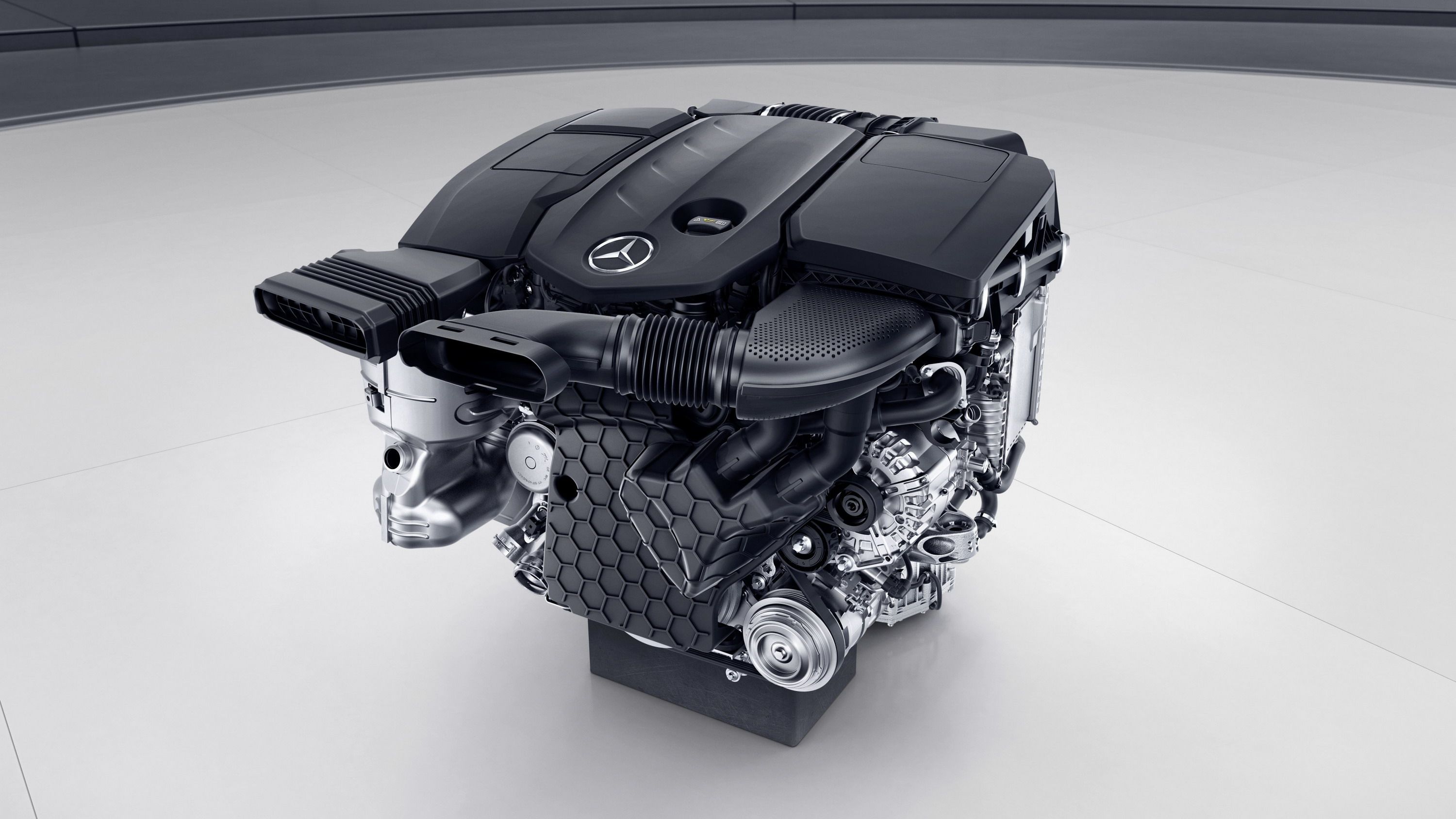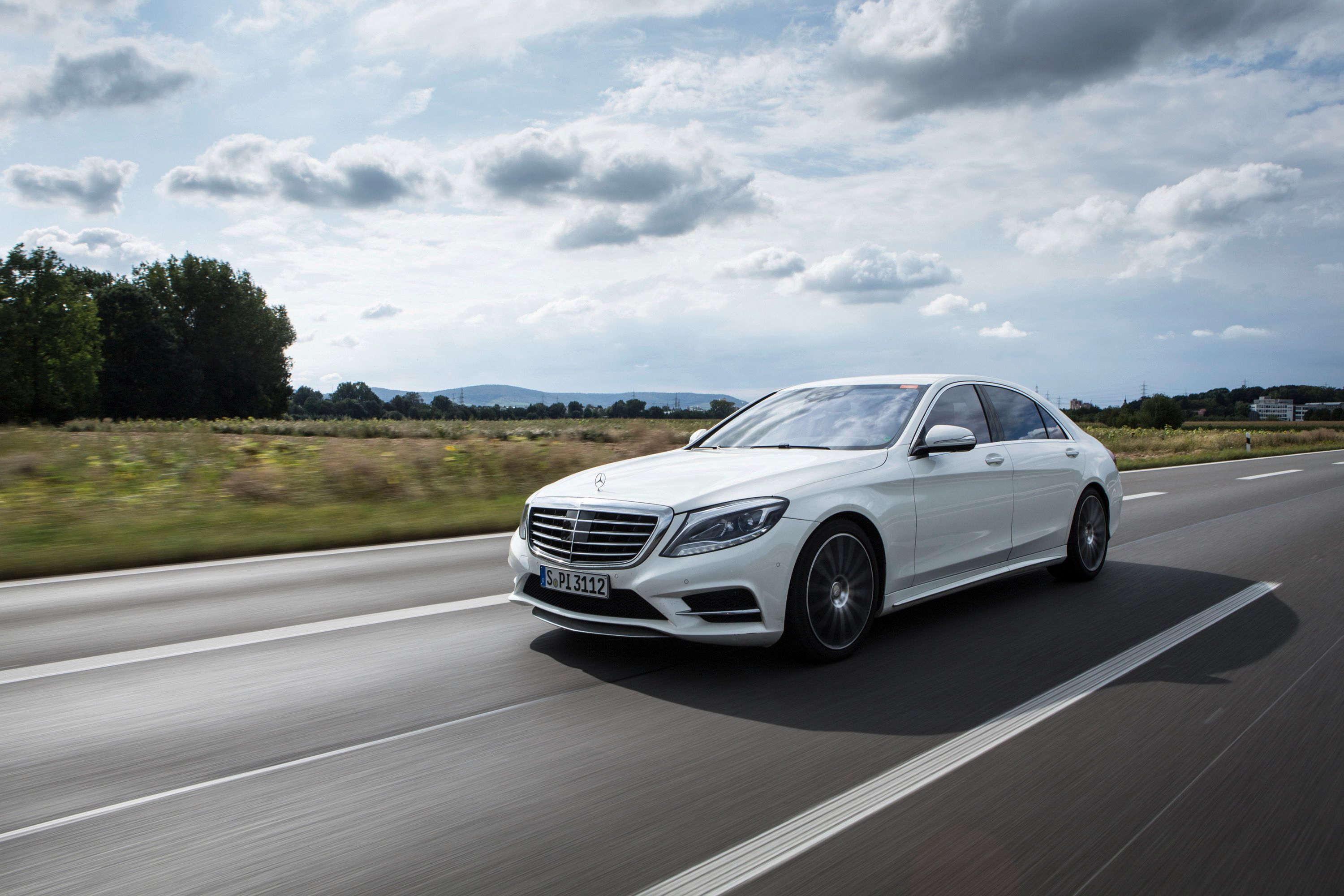Instead of whining and complaining about consistently tougher emissions regulations, Mercedes has put its engineers to work on developing additional members of its modular engine family to join that four-cylinder diesel engine that debuted last spring. The biggest news, however, isn’t the engines themselves, but the nature of them. Set to be integrated into Mercedes’ lineup for 2017 isn’t one, but two, inline six-cylinder engines. There’s also a new gasoline-sipping four-cylinder on the docket and a new Biturbo V-8 that will be replacing the current V-8 that we have all grown to love so much.
It's been 16 years since Mercedes last used M104 straight six, but all that is about to change with this new pair or brothers that will rest comfortably in their own niche. The first straight-six is a gasoline drinker that not only uses what Mercedes calls “intelligent turbocharging,” but also a 48-volt electrical system that includes an integrated starter/alternator that functions as a mild hybrid unit that supplies energy to the battery through “highly efficient energy recovery.” Because of this design, there are no other belt-driven accessories, with components like the water pump, power steering, and A/C compressor all being electric in nature. This makes for a somewhat shorter engine, which has been engineered with separated intake and exhaust manifolds. The overall outcome of this engine design: 408 horsepower and more than 368 pound-feet of torque. On the emissions front, this new gasoline-powered, straight-six produces somewhere around 15-percent less CO2 than the outgoing V-6 it replaces.
The other Straight-six to come out of Mercedes labs is a diesel drinker that is designed to comply with the upcoming emissions regulations that require real-world testing. Obviously, Mercedes isn’t ready to give up diesel anytime soon. This new engine makes use of stepped-bowl combustion, two-stage turbocharging and CAMTRONIC variable valve timing – a first for an in-line, diesel-drinking, six-cylinder. With the use of an aluminum block, steel pistons, and cylinder walls coated with NANOSLIDE technology, this new engine produces more than 313 horsepower, an increase of 55 horsepower over the engine it replaces. It is also said to be an increase in fuel savings by about seven percent.
For those power hungry fans out there, Mercedes is also introducing a new version of its Biturbo V-8. Dubbed M176, Mercedes claims it is “one of the most economical V-8s in the world.” With turbochargers positioned between the V-banks of the engine and cylinder deactivation via the CAMTRONIC valve timing system, this new engine uses a surprising 10-percent less fuel while delivering 476 horsepower. That’s 21 horsepower more than the outgoing Biturbo V-8 that it is replacing. While the home of some of these new engines has yet to be disclosed, Mercedes has already confirmed that this V-8 will, in fact, call the facelifted, 2018 S-Class home later next year.
But now that we’ve gotten all giddy about that awesome V-8, let’s not forget about its half-sized cousin, the M264. The M264 is a gasoline-sipping four-banger that makes use of an integrated, belt-driven, starter/alternator and a 48-volt electrical system. It utilizes an electric water pump and a pair of twin-scroll turbos. As far as power output and economy go, you’ll have to wait because Mercedes has kept those figures secret, but it has said that it “consumes significantly less fuel than a comparable six-cylinder engine” so, there’s that.
Continue reading for the full story.
Why it matters
New engines aren’t necessarily a big deal; it happens fairly frequently in the grand scheme of things. But, when it comes to the announcement of four new engines for the Mercedes brand, there’s a little more to it than the introduction of four new units. First off, these new in-line six models are the Mercedes’ first inline sixes since the M140 was phased out back in 1999. Plus, it appears as if they are already ready to take on the new emissions regulations that require real-world testing as opposed to the current, flawed testing systems currently in use. Plus, the introductions of these engines makes everyone happy. The bean counters who ultimately want cheaper, smaller units will be happy with the cost of the inline-six units. With fewer cylinder heads, and few external components – think only one exhaust manifold, for example – the engine is ultimately smaller and cheaper to produce. From an engineer’s standpoint, the nature of inline-six engines means a smooth, powerful engine in a somewhat compact package – it’s really a win-win. On top of this, all of the engines are said to provide more power and better fuel economy than the units they replace, which is good for consumers. Now that’s what you call a win-win-win!


